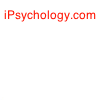Reality Therapy
Reality Therapy is the method of counseling that Dr. Glasser has been teaching since 1965. Reality therapy is firmly based on choice theory and its successful application is dependent on a strong understanding of choice theory. Reality therapy training is available to anyone...the first step in learning this tool is to enroll in a Basic Intensive Training.
Reality Therapy is a practical method of helping people take better control of their lives. It assists people in identifying what they want and what they need and then in evaluating whether they can realistically attain what they want. It helps them examine their own behaviors and evaluate them with clear criteria.
This is followed by positive planning designed to help control their lives as well as fulfill their realistic wants and needs. The result is added strength, increased self-confidence better human relationships, and a personal plan for a more effective life. Reality therapy provides people with a self-help tool to use daily to copy with adversity to grow personally, and to gain more effective control of their lives.
Reality therapy is based on choice theory, a systematic explanation of how the human mind works. According to choice theory, human beings choose many of their behaviors in order to satisfy innate human needs: self-preservation or survival, belonging and love, achievement or power or inner-control, freedom or independence, and fun or enjoyment.
Since unsatisfactory or non-existent connections with people we need are the source of almost all human problems, the goal of reality therapy is to help people reconnect. To create a connection between people, the reality therapy counselor, teacher or manager will:
- Focus on the present and avoid discussing the past because all human problems are caused by unsatisfying present relationships.
- Avoid discussing symptoms and complaints as much as possible since these are the ways that counselees choose to deal with unsatisfying relationships.
- Understand the concept of total behavior, which means focus on what counselees can do directly - act and think. Spend less time on what they cannot do directly; that is, change their feelings and physiology. Feelings and physiology can be changed, but only if there is a change in the acting and thinking.
- Avoid criticizing, blaming and/or complaining and help counselees to do the same. By doing this, they learn to avoid some extremely harmful external control behaviors that destroy relationships.
- Remain non-judgmental and non-coercive, but encourage people to judge all they are doing by the choice theory axiom: Is what I am doing getting me closer to the people I need? If the choice of behaviors is not working, then the counselor helps clients find new behaviors that lead to a better connection.
- Teach counselees that legitimate or not, excuses stand directly in the way of their making needed connections.
- Focus on specifics. Find out as soon as possible who counselees are disconnected from and work to help them choose reconnecting behaviors. If they are completely disconnected, focus on helping them find a new connection.
- Help them make specific, workable plans to reconnect with the people they need, and then follow through on what was planned by helping them evaluate their progress. Based on their experience, counselors may suggest plans, but should not give the message that there is only one plan. A plan is always open to revision or rejection by the counselee.
- Be patient and supportive but keep focusing on the source of the problem - the disconnectedness. Counselees who have been disconnected for a long time will find it difficult to reconnect. They are often so involved in the symptom they are choosing that they have lost sight of the fact that they need to reconnect. Help them to understand, through teaching them choice theory and encouraging them to read the book, Choice Theory: A New Psychology of Personal Freedom, that whatever their complaint, reconnecting is the best possible solution to their problem.
|
